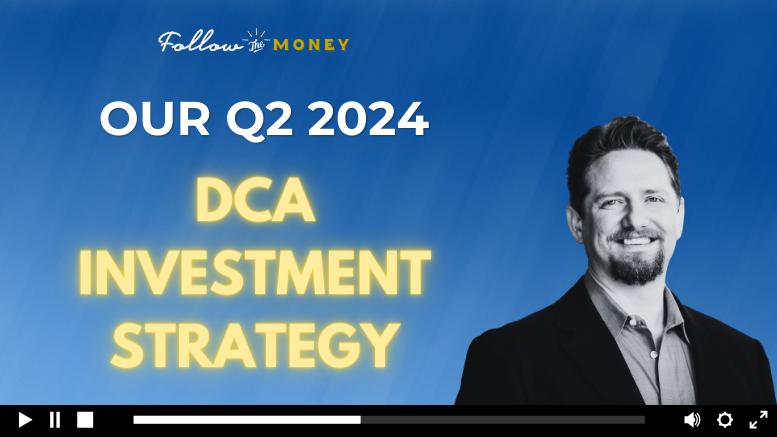by Jerry Robinson and Jennifer Robinson | FTMDaily.com
Back in March, the investment world learned that New York-based investment firm IndexIQ had filed paperwork with the Securities and Exchange Commission to market a new ETF backed by white diamonds. This ETF would be the first of its kind and demonstrates the growing investor demand for commodities amid growing uncertainty about the future of the global economy. According to the latest news, the SEC is still mulling over the idea.
Regardless, the fact that investment grade diamonds may soon be accessible to anyone with an online trading account means that demand could heat up by year's end. Diamonds have a long track record for providing fantastic returns, as they have increased in value by an average of 13.8% every year since 1938. China and India are two of the world's largest buyers of diamonds. And, as the story often goes these days, just as global demand appears to be increasing, supplies are plateauing. According to a report by Bain & Co, diamond demand in carats will rise more than 6 percent a year until 2020, outpacing the 2.8 percent annual growth in supply. You can read similar reports here.
The following are 16 reasons why diamonds may be the ultimate crisis investment, and why diamonds may even surpass gold returns.
#1 Based on growing global demand, especially from China and India, De Beers expects demand for rough diamonds to hit a new record in 2012. As the middle class continues to grow within emerging nations, De Beers expects China, India and the Middle East to account for 40% of global diamond demand by 2015.
#2 Diamonds have been held by savvy investors throughout history to protect against the ravages of hyperinflation. The most recent example of this occurred in the hyperinflation that struck Zimbabwe.
#3 The portability of diamonds is more favorable than that of gold or silver. A diamond investor can carry a million dollar portfolio in his shirt pocket, whereas the same amount of gold can be a challenge to transport. Try boarding an airplane with a million dollars of gold or silver!
#4 Diamond prices have increased an average of 15% per year since 1959, and the values of these precious stones are not directly linked to the stock or bond markets. Therefore, diamonds are a good hedge for investors looking to protect against inflation risk and interest rate risk.
#5 The average price of rough, or uncut, diamonds is forecasted to rise 9% to $145 a carat next year, 1.4% in 2013 and 4.8% in 2014. Even further, prices of top-quality diamonds climbed 23% this year, the biggest gain since 2006, according to the Rapaport Diamond Trade Index.
#6 Emerging nations, first and foremost India and China, will drive the demand for diamonds in the upcoming years, while consumption of developed nations is likely to moderate somewhat. On the supply side, the commissioning of new mines should be largely offset by depletion of matured ones that are seeing production taper off or at least stay flat. Global demand for diamonds will probably outstrip supply by 7 million carats by 2016, compared with a shortage of only 1 million carats this year.
#7 Signaling a boom in demand, China recently overtook Japan to become the biggest diamond buyer behind the US, where demand rose 7% last year, compared with 25% in China, according to De Beers.
#8 Diamonds have the highest hardness and heat conductivity of any bulk material and are used in a variety of industrial processes. Diamonds can be found in an assortment of saws and construction equipment, as well as high-tech applications like lasers, surgical equipment and in chip production. More than 80% of diamonds are used for industrial purposes.
#9 In 2010, rough-cut diamonds provided an overall return of 20%, outperforming the S&P 500 gain of 12.78% for the year. Analysts at the Royal Bank of Canada predict the upward trend of higher diamond prices will continue over the longer term. In 2011, prices for 1-carat diamonds returned about 20%.
#10 Although synthetic diamonds are easily accessible to consumers, synthetics are unlikely to impact authentic diamond demand because 1) the consumption of gem quality synthetic diamonds in 2010 represented only .01% of all diamonds by volume, so growth in synthetics would have to be extraordinary to have any meaningful impact on natural diamond sales, and 2) on the demand side, consumers have not demonstrated a willingness to buy synthetic diamonds –especially for engagement rings.
#11 A rapid development of new mining opportunities is unlikely due to the extremely long lead time of a new mine from discovery to production: up to 13 years.
#12 Diamonds may appeal to many investors due its estate tax benefits.
#13 In a recent study performed by Bain & Co., the “base” scenario, demand is projected to grow at 7 percent between now and 2020, while supply increases only 3 percent. The “higher” scenario pushes those figures to 11 percent and 4 percent, respectively, while in the “lower” scenario, demand is forecasted to grow 5 percent, while supply is flat.
#14 Investment in diamonds in the past has not largely impacted demand due to difficulties with valuation, the absence of a spot market, and the lack of liquidity. However, investment in diamonds is growing more popular, with some companies even proposing tradable funds for the public. This new demand by investors will push the price even higher.
#15 IndexIQ, exchange traded fund provider of alternative investment strategies, has filed with the Securities and Exchange Commission to launch a physically backed diamond fund. According to the filing, the IQ Physical Diamond Trust will hold physical diamonds, dividing diamonds into subcategories with characteristic variations. The diamonds used will be certified by the Gemological Institute of America. This could send investment demand much higher if approved by the SEC.
#16 Since there are no diamond futures being trading on the commodities exchange, a diamond ETF would most likely be backed by physical holdings, another factor that will push demand higher.
Being properly positioned in physical investment grade diamonds ahead of a paper ETF investment could prove to be a very wise investment. This is especially true when you consider what happened to gold and silver prices after precious metals ETFs became popular with investors. Although the diamond market does not have all the same characteristics of gold and silver, we expect a similar trend to occur if the SEC approves the pending diamond ETF.
FTMDaily.com recently produced a free educational webinar on precious metals and diamond investing that can be viewed here. (Fast forward to 1:19:00 for the section on diamond investing.)
 Jerry Robinson is a leading authority on the alternative investment and income development strategies. He has spoken on these topics around the United States, Europe, and the Middle East. He is an Austrian economist, published author, columnist, international conference speaker, and the editor of the financial website, FTMDaily.com. In addition, Robinson hosts a weekly radio program entitled Follow the Money Weekly, an hour long radio show dedicated to deciphering the week's economic news. For media inquiries, click here.
Jerry Robinson is a leading authority on the alternative investment and income development strategies. He has spoken on these topics around the United States, Europe, and the Middle East. He is an Austrian economist, published author, columnist, international conference speaker, and the editor of the financial website, FTMDaily.com. In addition, Robinson hosts a weekly radio program entitled Follow the Money Weekly, an hour long radio show dedicated to deciphering the week's economic news. For media inquiries, click here.







